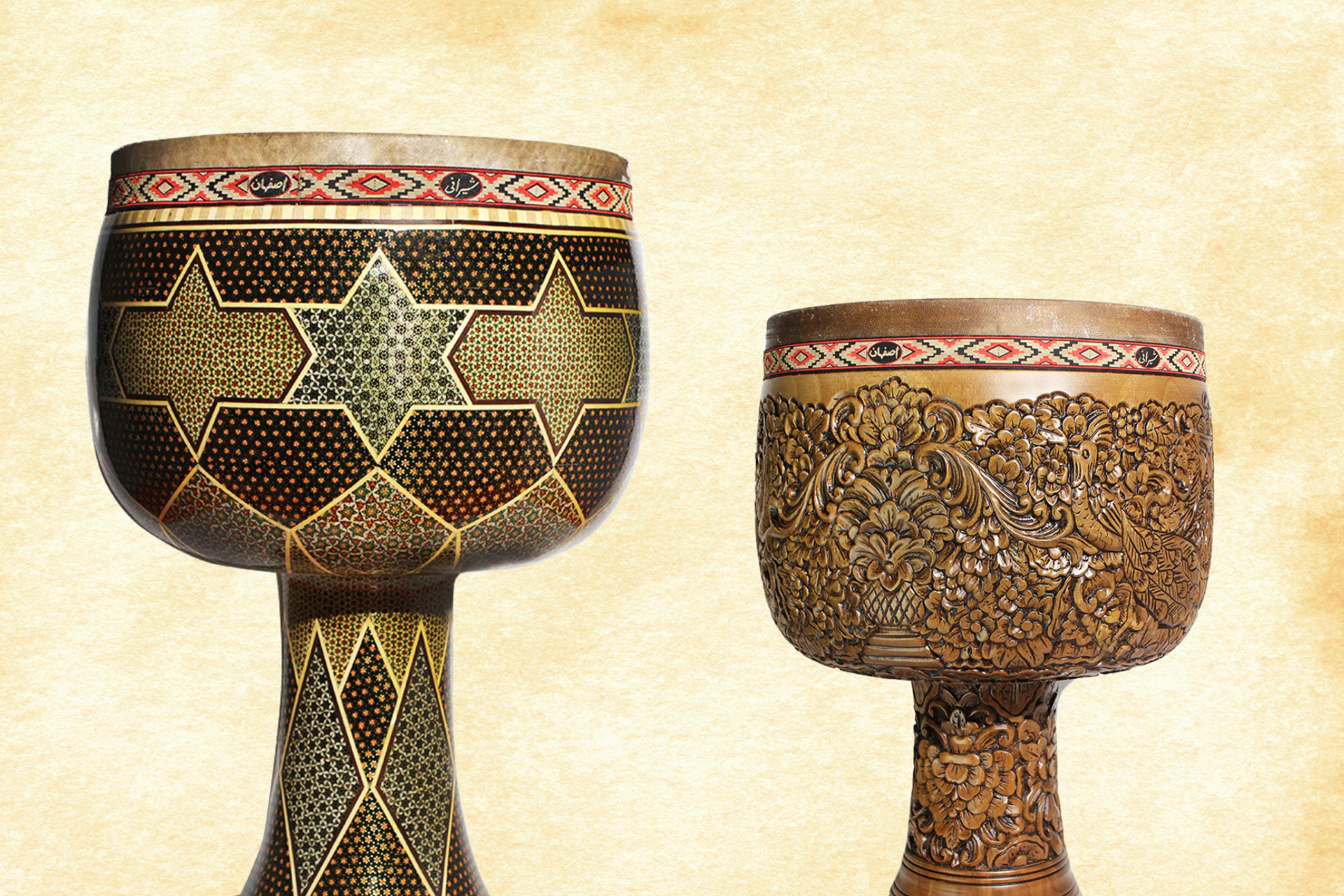General Articles
A beginner's guide to playing the Tonbak
The tonbak is a percussion instrument that originated in ancient Persia (now Iran). It is a goblet-shaped drum that has a wide range of sounds and rhythms. The tonbak is the main drum of Persian classical music, but it can also be used in other genres of music. In this article, we will teach you the basics of playing the tonbak, such as its history, construction, tuning, and technique.
The History of the Tonbak
The tonbak is one of the oldest drums in the world. It was first used in the Zoorkhaneh, a traditional Persian system of physical and spiritual training. The tonbak was also used in folk music and religious ceremonies. In the 19th and 20th centuries, the tonbak became an important part of Persian classical music, which is based on a system of musical modes called dastgah. The tonbak provided the rhythm and harmony for the melodic instruments such as the tar (a stringed instrument), the setar (a lute-like instrument), the santur (a hammered dulcimer), and the ney (a flute). Some of the most famous tonbak players and composers in Persian music history are Hossein Tehrani, Nasser Farhangfar, Bahman Rajabi, Mohammad Akhavan, and Pejman Hadadi.
The Construction of the Tonbak
The tonbak is a single-headed drum that is about 18 inches tall with a 11 inch diameter head. Its body is made from a single piece of hardwood such as walnut, mulberry, or apricot. The body has a narrow neck and a wide base. The body may have a carved design or pattern on its surface. The drumhead is made from camel or goat skin that is stretched and secured with glue, tacks, or both.
The drumhead has a large opening that allows for deep bass tones as well as various treble tones. Some modern tonbaks have tuning mechanisms that allow the player to change the tension of the drumhead by turning screws or knobs. However, most traditional tonbaks have a fixed tension that is adjusted by heating or cooling or dampening or drying the skin before playing.
The Tuning of the Tonbak
The tonbak does not have a specific pitch or tuning system. Rather, it has a range of pitches that depend on the size and shape of the drum, the type and thickness of the skin, the tension of the drumhead, and the temperature and humidity of the environment.
The player can modify the pitch of the tonbak by applying finger pressure on different parts of the drumhead during playing. However, the tonbak is not meant to play exact notes or melodies. Instead, it is used to create rhythmic patterns and textures that complement and contrast with the melodic instruments.
The Technique of Playing the Tonbak
The tonbak is played with both hands using various parts of the fingers, palms, and wrists. The player holds the drum diagonally across their chest with their left leg supporting the neck of the drum and their right leg slightly bent. The left arm rests on the body of the drum so that the fingers can reach the skin comfortably. The right arm is free to move around the drumhead and strike it from different angles.
There are many different strokes and sounds that can be produced on the tonbak. Here are some of them:
Ton: This is a bass tone that is produced by hitting the center of the drumhead with the joined fingertips of your cupped right hand. The heel of your hand should hit the rim of the drum at the same time and bounce off immediately.
Bak: This is a sharp sound that is produced by hitting the edge of the drumhead with your ring finger or your middle and ring fingers together. Your fingers should be straightened and slightly curved inward.
Pelang: This is a snapping sound that is produced by flicking your middle finger against your thumb and releasing it quickly on the edge of the drumhead.
Meyaneh: This is a middle tone that is produced by hitting the area between the center and the edge of the drumhead with your index finger or your index and middle fingers together. Your fingers should be slightly bent.
Riz-e-por: This is a roll sound that is produced by rapidly tapping the edge of the drumhead with all nine fingers (excluding your thumbs) in a circular motion. Your fingers should be relaxed and close together.
These are some of the basic strokes that you can use to play the tonbak. There are many more advanced techniques that involve different combinations, variations, and embellishments of these strokes. You can also use metal rings, coins, or other objects to create extra sounds by clacking them against the drum shell or the drumhead.
We hope that this article has given you a good introduction to the tonbak and how to play it. The tonbak is a wonderful instrument that can enrich your musical experience and connect you with the culture and history of Persian music.
To learn more about the tonbak, you can watch videos, read books, listen to recordings, or take lessons from a professional teacher. The tonbak is not only a drum, but also a musical treasure that you can enjoy and share with others.

